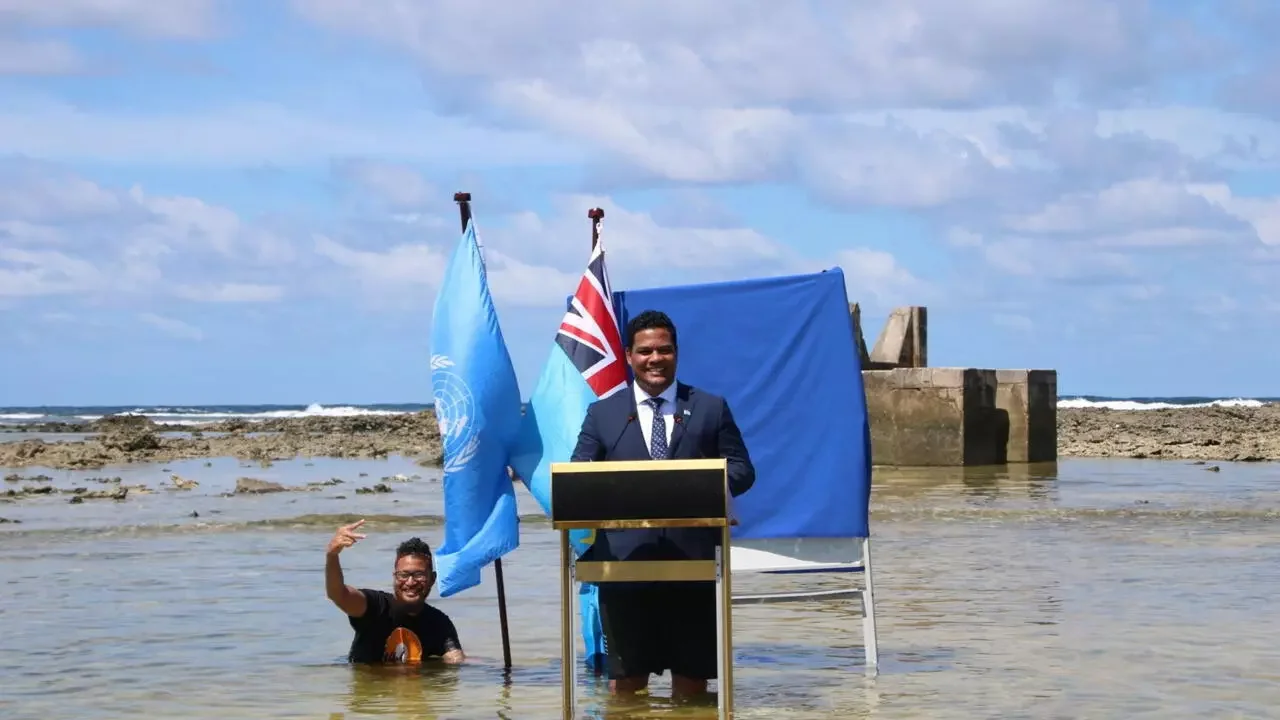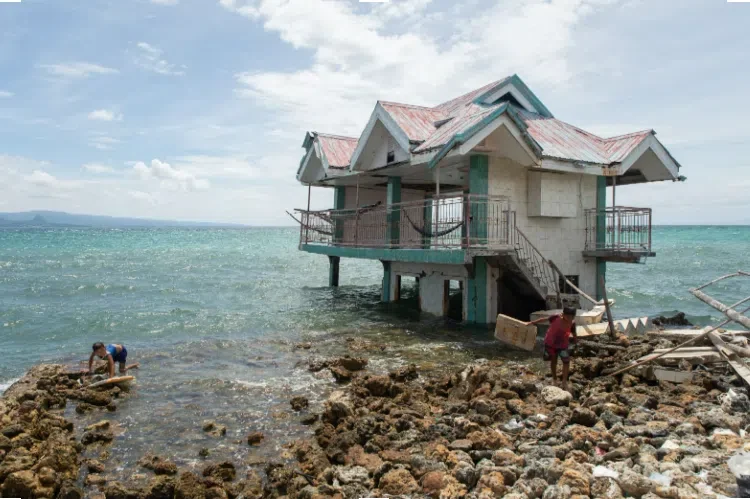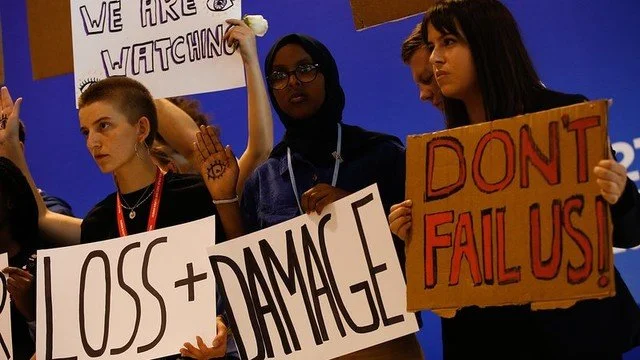Culture Adrift: How can reforms to international refugee law and climate agreements better protect the cultural identity of communities displaced by sea level rise?
The human-driven forces reshaping our environment are becoming increasingly visible, from rising global temperatures to more frequent and intense storms. Among the most serious and far-reaching effects is sea level rise (SLR), which poses a growing threat to coastal and low-lying communities globally. Recent assessments by the Intergovernmental Panel on Climate Change (IPCC) indicate that the global mean sea level (GMSL) rose by approximately 0.2 meters between 1901 and 2018, and is projected to rise another 0.38 to 0.77 meters by 2100. Alarmingly, over 3 billion people live in countries highly vulnerable to climate change, and in small island developing states (SIDS), estimates suggest that SLR-induced flooding could cost up to US$14.3 trillion by 2100. Yet, physical loss is only part of the story. For many coastal and island communities, displacement also threatens cultural heritage, an aspect gravely overlooked by current refugee and climate frameworks.
The Case of Tuvalu and THE Visayas
As a slow-onset event (SOE), it is easy to consider SLR as a future problem. However, South Pacific nations, such as Kiribati and the Solomon Islands, have had islands submerging since 1999. For Tuvalu, SLR is already threatening its entire nationhood. In 2022, they made headlines for one of their innovative adaptation strategies, which focuses on creating a digital version of their country on the Metaverse. Legislatively, their constitution has been modified to account for these climate-related impacts; their physical boundary can now be amended by parliament. Additionally, the maritime space of their borders will remain, even if territorial land ceases to exist. This is intended to maintain functionality as a state, while simultaneously preserving Tuvaluan culture, knowledge, and history. Despite these innovative solutions, the importance of their coastal land, which is expected to be 95% underwater at high tide by 2100, cannot be dismissed. When considering loss and damage, a recent study found loss of culture amidst climate-related displacement to be a primary concern for their citizens. Tuvaluans interpret their sovereignty using the Fenua philosophy, an indigenous term referring to the interconnectedness of physical land and the community residing on it. Many Tuvaluans are culturally connected to activities like fishing, which is deeply rooted in the geography of their land. Here, Tuvaluan sovereignty and culture are inexplicably interconnected with losses and damages that may be caused by SLR.
Tuvalu's Foreign Affairs Minister, Simon Kofe, Addresses COP 26 Virtually (France24, 2021)
The Philippines, being an archipelagic country with over half of its population living along the coasts, is at high risk of rising sea levels. SLR is already disrupting the homes and livelihoods of many Filipinos in the Visayas. Saltwater intrusion adversely affects farmlands and crops, consequently decreasing agricultural yields. Coastline erosion is destroying beaches, harming the economic importance of tourism and fisheries sectors. Finally, any rise in sea level renders coastal communities more susceptible to environmental disasters. The Visayas faces an estimated 20 cm SLR by 2100; this livelihood disruption will force climate-related migration far before the Visayas becomes submerged. With the broad implications of cultural loss due to SLR in the coming decades, it is clear that more strengthened adaptation measures are required to prepare other countries for the challenges Pacific Islands like Tuvalu are already facing.
Legal Recognition of Climate Migrants
The 1951 Refugee Convention and its 1967 Protocol remain the cornerstone of international refugee law. However, their definition only covers those fleeing persecution based on race, religion, nationality, political opinion, or membership in a particular social group, excluding people displaced by climate-related threats. As a result, climate migrants exist in a growing gap: displaced yet not formally recognized.
However, developments beyond the Convention have demonstrated that the international community is moving toward a more expansive and adaptable approach to protecting climate migrants. The Nansen Initiative, launched by Norway and Switzerland in 2012, rallies 110 States behind a voluntary, humanitarian cooperation to protect climate-displaced individuals. The United Nations Framework Convention on Climate Change (UNFCCC) Task Force on Displacement (TFD), established in 2015 at the 21st Conference of the Parties (COP21), pursues similar objectives. It aims to enhance cooperation on human mobility, including migration, displacement, and planned relocation. Additionally, regional frameworks push the frontier further. The African Union’s 2009 Kampala Convention, which is the only binding treaty on internally displaced persons, has more than 30 ratifications and explicitly lists “natural or human‑made disasters, including climate change” as grounds for protection. In Latin America, the Cartagena Declaration (1984) defines refugees to include flight from “circumstances which have seriously disturbed public order,” a clause already used by 14 States to cover climate‑related displacement.
More recently, UNHCR’s 2024-2030 Strategic Plan for Climate Action builds on these initiatives. It aims to protect displaced populations, strengthen their resilience, and promote self-sufficiency, particularly when climate shocks fuel violence or other human rights abuses. Still, like the 1951 Refugee Convention, it applies where climate stress overlaps with persecution, offering little recourse for people displaced by SOEs like sea-level rise.
Given the direction of current policy, States could realistically move to explicitly include climate migrants in the 1951 Refugee Convention. However, even if that happens, a key question remains: how will their cultures be protected? The Convention requires States to grant refugees many of the same rights as citizens, but it says nothing about preserving their cultural identity. While Article 27 of the International Covenant on Civil and Political Rights (ICCPR) protects the rights of ethnic, religious, and linguistic minorities to maintain their culture, religion, and language, it only applies to citizens or long-term residents, and not to newly arrived refugees. There are growing examples of bilateral and national efforts to address this gap. The Falepili Union between Australia and Tuvalu, for instance, acknowledges the cultural stakes of displacement. Kiribati’s “Migration with Dignity” policy also aims to ensure that people forced to relocate can preserve their identity and way of life. But internal displacement presents its own challenges. In the Philippines, in Tubigon, Bohol, in particular, communities were relocated after SLR affected the area, alongside the lasting effects of a 2013 earthquake. Because their livelihoods were rooted in the islands, the move to the mainland disrupted their economic survival and cultural ties. Without systems that protect these dimensions, relocation efforts risk leading to even greater losses.
Loss and Damage Under the UNFCCC
The most relevant international law is derived from the UNFCCC. The Convention defines loss and damage as “irreversible adverse impacts of climate change on natural and human systems. These are often so severe and extensive that they are beyond the ability of these systems to adapt”. At COP 19 in 2013, the Warsaw International Mechanism for Loss and Damage associated with Climate Change Impacts (WIM) was established. Comprising committees, expert groups, and task forces, it aims to enhance knowledge, strengthen dialogue, and bolster coordination between countries and stakeholders to ultimately address loss and damage. Similarly, the Santiago Network was developed to help mobilize the technical assistance of relevant organizations to regional, national, and local developing areas susceptible to loss and damage. Finally, the Fund for Responding to Loss and Damage (FRLD), a new financial mechanism under the UNFCCC, was established at COP 27 in 2022. The Philippines serves as the host of the Board, and the World Bank hosts its financial and operational aspects as interim trustee and secretariat.
Loss and damage–subdivided into economic and non-economic loss and damage (NELDs) –can be caused by either SOEs or extreme weather events. In this case, SLR is an SOE, and cultural loss is an example of associated NELDs. This is especially important because NELDs are extremely hard to quantify. While there are mechanisms in place to provide technical and financial support to address loss and damage, such as the FRLD, it is a unique challenge to provide such support for an unquantifiable NELDs like loss of culture, which may vary depending on many factors. Current policy gaps related to NELDs include the inconsistency among methodologies and assessment tools, and insufficient national financial mechanisms. Although there are methods that have been used to assess NELDs by assigning economic valuation using use-value and non-use values for quantifying losses and damages, these have been commonly used to assess the value of ecosystems and biodiversity loss, and yet continue to face significant challenges in assessing aspects like cultural loss due to the crucial role of subjective value judgements.
The WIM executive committee’s recent technical paper on NELDs stresses the importance of the loss of cultural heritage. In partnership with the United Nations Educational, Scientific, and Cultural Organization (UNESCO), they stress the importance of sustainability efforts for UNESCO World Heritage sites and the recognition of cultural heritage in international processes. Unfortunately, existing tools remain unable to adequately document loss and damage associated with SOEs like SLR. The recent technical guide on sea level rise is largely focused on avoiding loss and damage rather than addressing future certainties. While efforts to prevent future loss and damage are essential, more needs to be done to adapt to the inevitabilities ahead for communities that will experience cultural loss and climate-related displacement due to sea level rise. Tuvalu, for example, is actively calling for a reassessment of loss and damage frameworks that emphasize the role of cultural identity, and has expressed frustration with the bureaucratic nature of climate finance mechanisms related to loss and damage.
Recommendations
The first step in ensuring that climate migrants and their cultures are adequately protected from climate-induced displacement is twofold: first, by formally integrating climate-related displacement into the scope of the 1951 Refugee Convention; and second, by introducing a clause similar to Article 27 of the ICCPR to safeguard cultural identity. A standalone treaty on climate displacement and cultural preservation could provide long-term legal clarity. However, many states may resist such reforms, hesitant to integrate displaced communities beyond basic needs. Given this context, it may be more advantageous to strengthen and scale existing soft-law frameworks like the Nansen Initiative, which offer non-binding guidance for cross-border climate displacement while allowing states to retain control over implementation.
As has been emphasized by multiple parties, such as the WIM executive committee and the nation of Tuvalu, cultural loss needs to be a priority for integration into further international frameworks and agreements. Of note to this particular context of climate-displaced persons would be to integrate principles of NELDs into the UNHCR. As seen by examples in Tuvalu and the Philippines, culture is inextricably linked to physical homelands, and this should be considered in the context of climate-related displacement, not just those where displaced persons are fleeing persecution. More specific to cultural loss, the identification of NELDS could become a requirement for accessing funding from the FRLD. This would ensure NELDS are financially accounted for and not forgotten due to their unquantifiability. These recommendations can help ensure frameworks and support are in place to adequately resettle and maintain the culture of the increasing number of climate-displaced people due to SLR in the coming decades.
Note: This blog is a collaborative piece by Nick Reszetnik and Zander Neilsen based on their chosen environmental issue. They are part of Parabukas’ 7th Summer Internship Program in 2025, through our partnership with the Queen’s Project on International Development (QPID) program of Queen’s University, Ontario, Canada.



